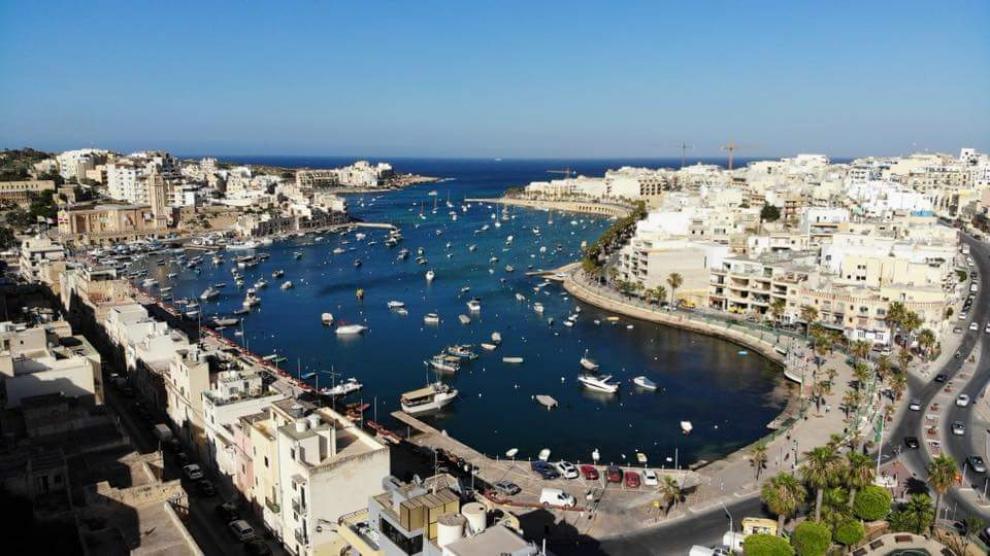Thessaloniki gets ready for its metro launch in November
The underground rapid transit lines have been under construction for almost two decades due to various project delays
 TheMayor.EU logo
TheMayor.EU logo 
Marsaskala or Marsascala, known to locals as M'Skala, is a pittoresque Maltese village, located in the South Eastern harbour. The name Marsaskala refers to a Sicilian connection as apparently the word ‘marsa’ means ‘port’ and ‘sqalli’ means ‘Sicilian’. Marsaskala was once a Roman Port and Roman remains lie scattered at ‘tar-Rumi’, where pre-Roman cart ruts have been found. Though the area is partly surrounded by tall white cliffs, the smooth inlets offered easy access to invaders during the 17th and 18th centuries. Since the area is easily accessible by sea, successive conquering armies came ashore here and set about taking the land and slaves.
The defences of the area were established late and the Battery of the French Knight Vendome dates to about 1715. Some of the residents fortified their homes and farmhouses themselves. Even after the area was finally fortified, the population remained small and Sicilian fishermen were more familiar with the area than the Maltese were.
A possible explanation of the lack of settlements in the area was the fear of pirates, who roamed the sea looking for treasure and slaves. The local population felt safer in the walled cities of Cottonera and Valletta and also in the inland villages. Another reason may well have had something to do with the geography. The well sheltered harbour could not by itself discourage people from settling here.
The harbour extended into the Fawwara district until the 19th century, which provided even better shelter. A spring is known to have existed here, but there is no trace of it today. The rugged coastline around Marsaskala is indeed a delight to see, but it has been the site of several shipwrecks. The most recent one involved the “Angel Gabriel” which was a Greek Tanker that split in half on September 23rd 1969.
Marsaskala remained a tiny fishing port until the advent of the Second World War, following which the people living in Cottonera started to build summer villas in Marsaskala. Later on they decided to become all year round residents, gradually transforming the tiny fishing port of Marsaskala into the resort that it is today.
Established as a parish in 1949, the Marsaskala population is just about doubling every ten years or so. There are modern hotels, restaurants, cafeterias, a duck pond and a cinema.
The mood is so relaxed here and visitors love walking along the promenade stretching all the way around the bay from Żonqor Point around to the Jerma Palace Hotel, with stops on the way for drinks and snacks. These walks usually take place in the evenings as then it is a lot cooler than during the days, the latter usually being spent inside and around the cafes and restaurants.
Source: Marsaskala Local Council
The population of Marsaskala in the winter is of 13 726 people (Statistical Office of Malta, 2017) which more than doubles in summer. Local councils in Malta do not collect any taxes, but receive financial aid form the Central Government. National government allocates around €1 million to Marsaskala, which are used to cover community services, including cleansing, road maintenance, waste collection etc. On top of this, the locality applies for funding under various European Union financial mechanisms.
The Council of Marsaskala comprises of nine Councillors including the Mayor, the Executive Secretary and six clerks. There are also eight people personnel from different Government schemes.
The economy of Marsaskala is quite healthy especially during the summer season, which is further facilitated by the nice weather. It relies mostly on tourism, so the village makes it a point to provide the best hospitality and service to all visitors.
The village offers about five boutique hotels which are all family run business. The big Jerma Palace hotel which used to accommodate 600 residents daily closed its doors in 2007, thereby eliminating a great asset for the local economy and employment.
Hundreds of new apartments are being constructed so more residents are coming to the village, which is especially beneficial to small business. At the same, the village is facing a major problem with lack of parking spaces.
There are about 900 retired British residents living in the village and about 45 different communities from around the globe, which further stimulates the market.
The ongoing restoration of St Thomas tower will also be of a great advantage to the local economy. The former is under the remit of Heritage Malta. Funds are being awarded so as to transform it into a museum of the Pirates of the Mediterranean.






Marsaskala Local Council
228, Triq is-Salini,
Marsaskala, MSK 3314
0035699450861 (Mayor Mario Calleja)